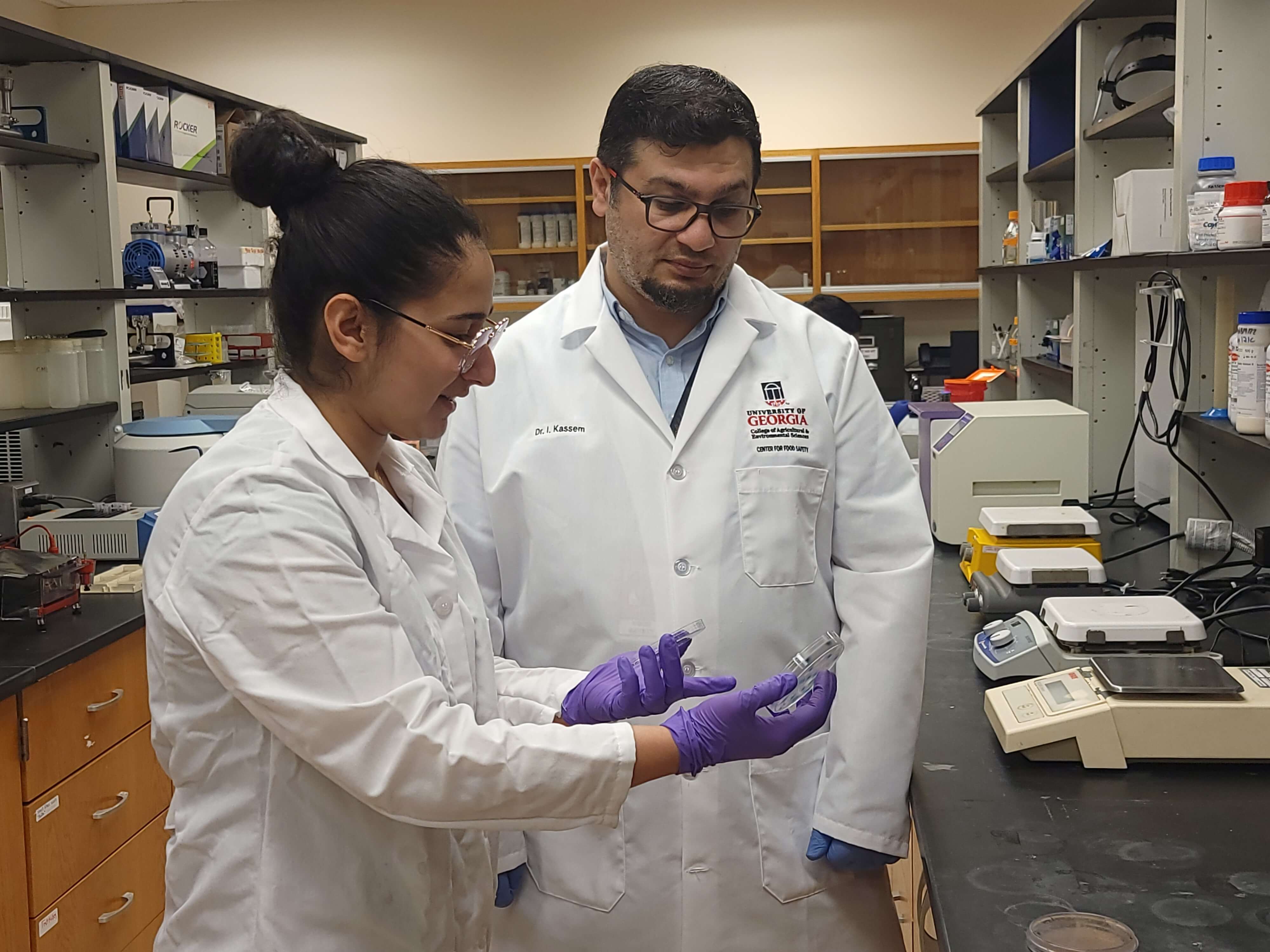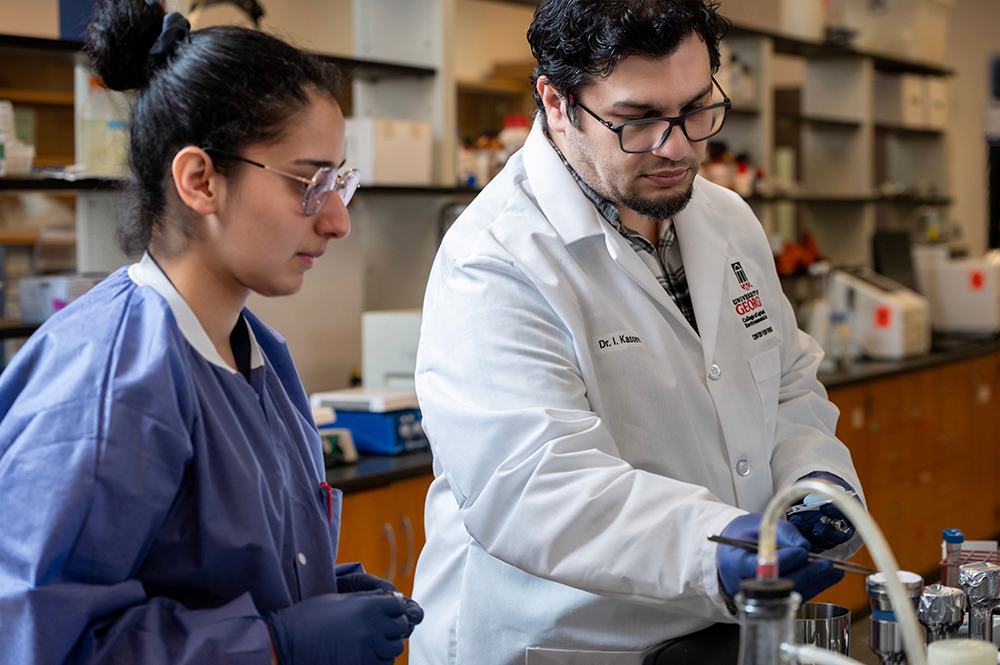
The World Health Organization estimates that there are 600 million cases of foodborne illness every year. One way harmful pathogens can enter the food supply is through irrigation water, but researchers are using precision agriculture to create a cost-effective and environmentally friendly way to combat the bacteria that makes us sick. And the tool they are using is available to everyone — the sun.
In recent years, researchers have begun to examine the effects of light on microorganisms. Antimicrobial blue light is used in hospital settings to reduce pathogens, and current research is underway at the University of Georgia to determine the viability of its use in food production.
UGA College of Agricultural and Environmental Sciences Professor Govindaraj Dev Kumar, who has been involved with those studies, is also the lead researcher on a recent study to determine sunlight’s ability to affect the survival of certain bacteria in water.
Knowing that high levels of light affect bacteria, Dev Kumar and fellow UGA Professor Abhinav Mishra wanted to determine the ideal sunlight conditions for reducing bacteria, specifically Salmonella and Escherichia coli in water.
“Sunlight affects not only plants but also microorganisms present in the environment, including foodborne pathogens capable of causing human illnesses,” Dev Kumar said. “Sunlight can be used as a cost-effective and environmentally healthy means of reducing bacterial counts in agricultural water. This is important because leafy greens and vegetables grown using irrigation water that is contaminated with bacteria can potentially pass those bacteria on to human consumers, leading to illness.”
Dev Kumar’s team researched how factors such as sunlight, water temperature and the amount of UV radiation affect Salmonella and E. coli. Conducted during the pandemic when most campus personnel worked remotely, his team was granted permission to work with the bacteria outside, allowing them to conduct their experiments in real-world conditions.
Using the data they collected, the team performed a correlation analysis using artificial neural network modeling to predict the most likely outcomes of various scenarios, Dev Kumar said. The model determined that bacterial populations declined more in cooler water than in warmer water when exposed to sunlight. This observation could help scientists understand why bacterial counts tend to be higher in water during summer.
“My theory is that free radicals are more stable in cold water than warm water. In winter, the sunlight causes more reactive oxygen species (ROS) accumulation in the water, but in summer there is less ROS in the water. Therefore, sunlight in winter months might be more antimicrobial than sunlight in the summer months, and that could be why we tend to have more bacteria in water during summer,” Dev Kumar said.
His team hopes that, with enough research, they can create an app that will allow farmers to determine when water supplies will contain the least bacteria, but more research is needed. Next, they plan to conduct their research across the U.S. to determine how various regions are affected.
The study, titled “Sunlight Parameters Influence the Survival and Decline of Salmonella and Escherichia coli in Water,” is out now in the Journal of Food Protection.






